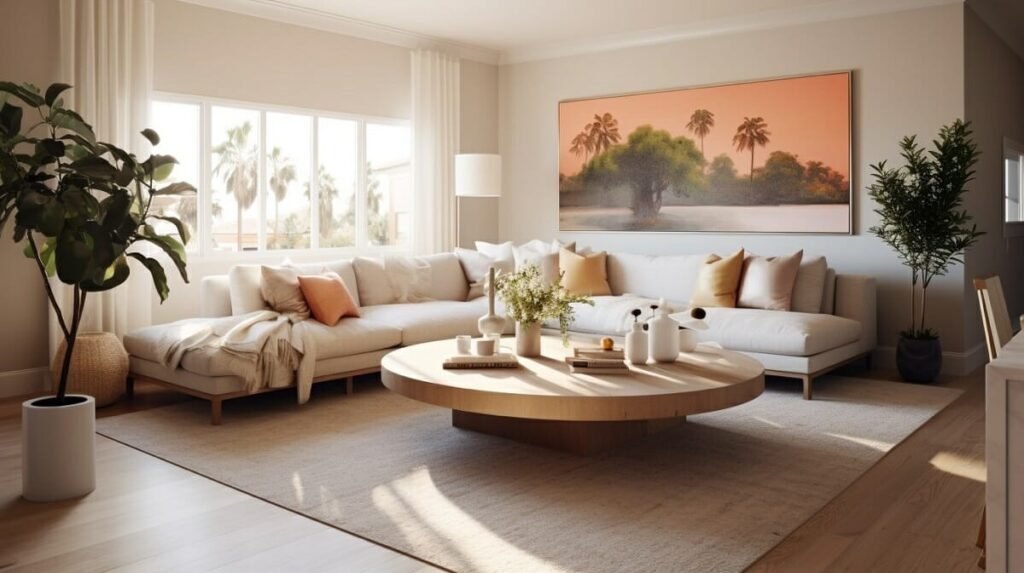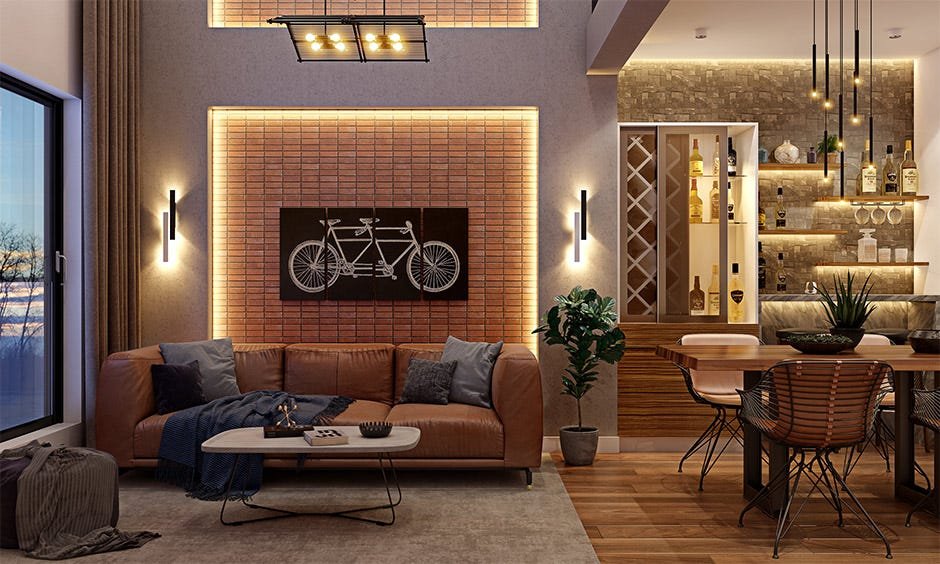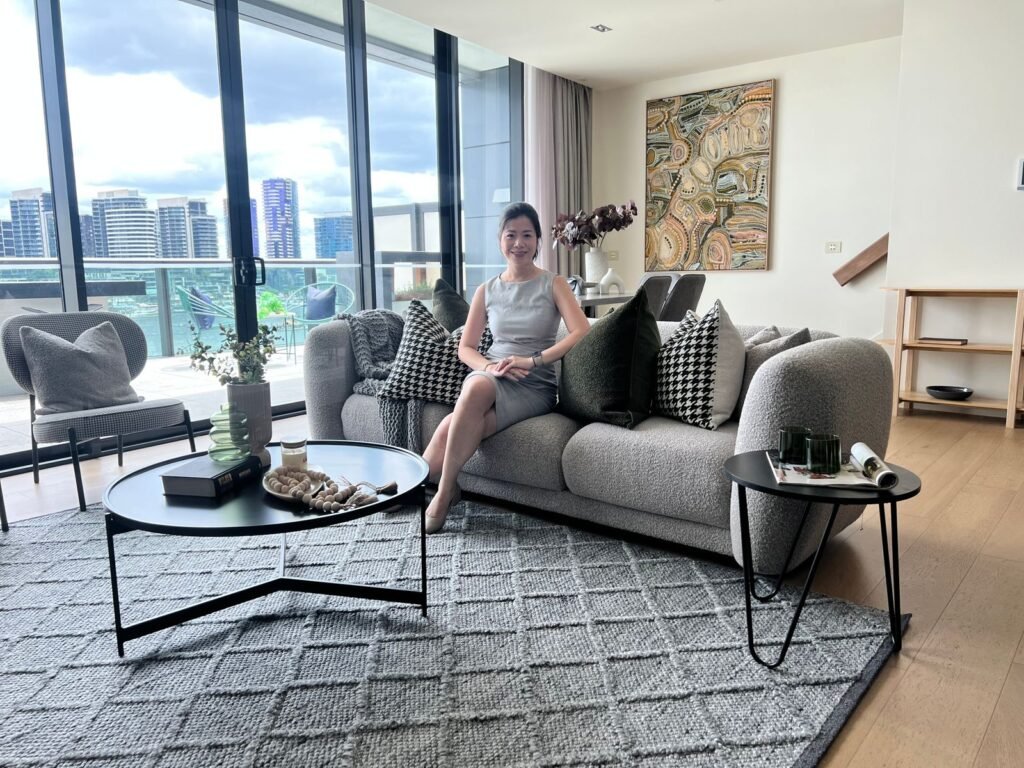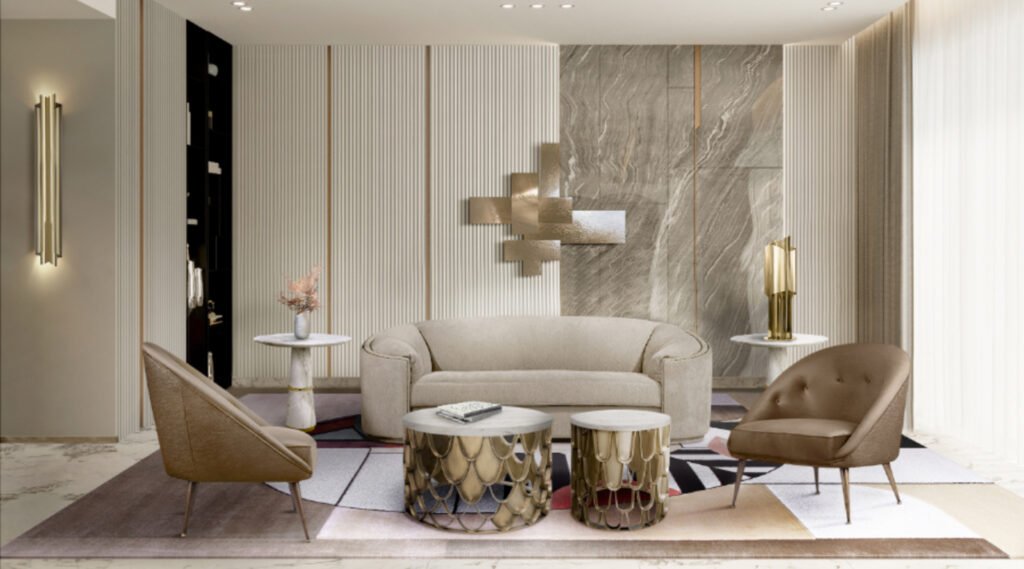Interior design encompasses a multitude of elements, serving as a composite expression of various facets. It not only accentuates personal style preferences and individuality but also reflects contemporary trends and societal norms.
A fundamental aspect of interior design involves ensuring the ongoing relevance of a residence. Instead of resorting to frequent relocations to access modern and fashionable living spaces, interior design offers a strategic alternative within the realm of home improvement.
Through straightforward measures such as the application of fresh paint in communal spaces, the introduction of a new rug, or the implementation of retractable fly screens to facilitate uninterrupted indoor-outdoor transitions, a revitalized ambiance can swiftly imbue your home with a renewed sense of novelty.
The evolution of interior design trends
A notable aspect of interior design is its dynamic nature, characterized by the continuous ebb and flow of trends, often influenced by external factors like geopolitical events or global health crises. Ultimately, it consistently provides a platform to imbue residences with a contemporary essence.
During the 1920s, residences often embraced rich hues and striking contours reflective of the art deco movement. However, the austerity imposed by World War II necessitated a shift towards minimalism in the 1930s. Advancing to the 1980s, interior design trends were characterized by the emergence of maximalism.
Advancing to the 2000s, open floor plans gained prominence, followed by the prevalence of smart homes in the 2010s. Transitioning into the 2020s, interior design preferences now prioritize concepts of comfort and adaptability, influencing decisions ranging from wall color selection to the acquisition of multifunctional furniture items.
Thus, intrinsic to interior design lies its symbiotic connection with society. As societal dynamics evolve, so too does interior design. This symbiosis ensures that your home harmoniously aligns with your lifestyle and aesthetic inclinations.
Key interior design trends for 2024

The correlation between design trends and societal shifts implies that upcoming home designs will persist in embracing modernization. However, this evolution will not rely on conventional approaches like utilizing a grey color scheme. Rather, contemporary principles such as sustainability and integration of smart technology will take precedence.
1. Color palette and schemes
As the collective memory of the pandemic fades, there’s a discernible shift in color palettes away from nature-inspired hues, like various shades of green. Instead, warmer tones are gaining traction, such as yellows, reddish browns, and soft blues, aimed at fostering sentiments of positivity and nurturance.
2. Furniture and layout
Minimalism and functionality are poised to dominate interior design trends, particularly in furniture selection. Instead of opting for single-purpose pieces, there’s a shift towards multifunctional items, aimed at optimizing both space and utility within the home. Furthermore, well-defined living and working areas within the home layout will further facilitate this objective.
3. Sustainable design
Numerous industries are actively incorporating sustainability principles, and interior design is no exception. Whether it’s furniture crafted from recycled materials or the integration of energy-efficient lighting solutions, there exist diverse avenues to integrate sustainability into interior design practices.
4. Technology integration
An emerging trend in interior design revolves around the seamless integration of technology into daily life within homes. Whether it’s employing applications for temperature control or remotely managing lighting systems, technology is poised to significantly enhance convenience and impart a distinctly contemporary ambiance to residential spaces.
5. Mixing tradition with modernity
Although modernity permeates numerous prevailing interior design trends, certain timeless elements retain enduring appeal. Hence, there’s a notable prevalence of homes seamlessly blending classic features with contemporary aesthetics, such as incorporating 1970s wicker furniture alongside walls painted in a serene shade of cool blue.
6. The role of natural elements
An enduring interior design trend involves the integration of natural elements, reflecting the concept of biophilic design. This approach acknowledges humanity’s innate inclination towards nature by incorporating natural materials, textures, indoor foliage, and maximizing natural light within interior spaces.
7. Personalization and customization
In light of recent global circumstances, the home has assumed an unprecedented significance as a sanctuary. Consequently, a prevailing interior design trend is the infusion of personalized elements reflecting individual personalities. One approach to achieve this is through the creation of a feature wall tailored to showcase unique traits. However, it’s essential to ensure that these personalized touches do not compromise the long-term resale value of the property.

Budget-friendly design tips
Consistently updating a home to keep its interior design current can prove to be a demanding and expensive endeavor. Therefore, instead of undertaking comprehensive renovations, consider targeted additions or enhancements aimed at imbuing the space with a sense of luxury, enhancing functionality, and augmenting resale potential.
As an illustration, one could explore methods to enhance spaces with natural illumination. This could involve the strategic incorporation of additional windows to facilitate the seamless flow of light. Alternatively, optimizing existing features might entail considering window treatments that effectively allow light to penetrate while aligning with contemporary interior design aesthetics.
Another valuable design strategy to consider is embracing the idea of applying a fresh coat of paint. Whether it’s accentuating a feature wall, refreshing an entire room, or refurbishing kitchen cabinets, such updates can rejuvenate the space. Moreover, diligent maintenance of the paint job ensures that the chosen color palette remains aligned with current trends.
The importance of professional guidance
When considering renovation projects, certain tasks lend themselves to DIY endeavors, while others necessitate the expertise of professionals. This approach ensures meticulous attention to compliance, safety, and functionality standards throughout the project execution.
In accordance with this principle, it is imperative to entrust electrical, structural, and plumbing tasks to qualified professionals. Similarly, the installation of retractable fly screens is best handled by experienced professionals to ensure optimal functionality and safety.
Throughout the design process with Artilux, clients have the flexibility to actively participate according to their preferences. This entails selecting the precise color for screen frames and ensuring that the design harmonizes with the livability of their home. Nonetheless, it is strongly advised to entrust the installation process to trained professionals for optimal results.

Renovating your home in 2024
Interior design, akin to many facets of life, is influenced by trends. While some trends endure over time, others follow cyclical patterns. Nevertheless, every trend is invariably shaped by broader societal shifts.
To remain abreast of current trends, homeowners have the option to undertake both minor and major renovations. Nonetheless, the primary focus of all decision-making processes should revolve around adopting trends that enhance livability, functionality, and aesthetics.
Given the abundance of expertly executed renovation options available, this is an opportune moment to commence strategizing your home renovation endeavors for 2024.

